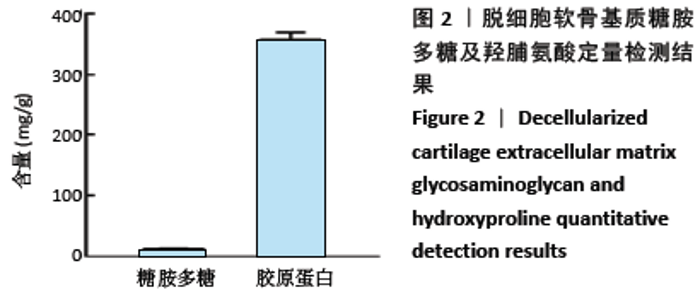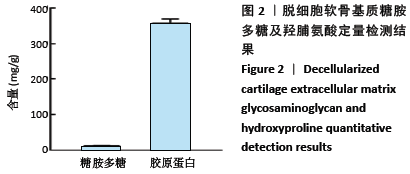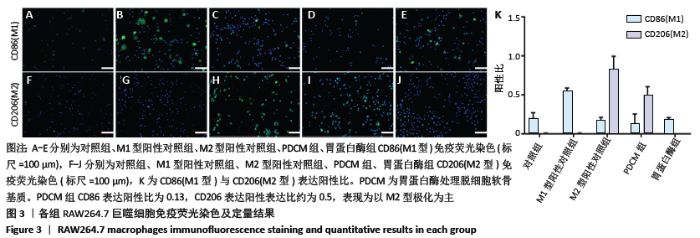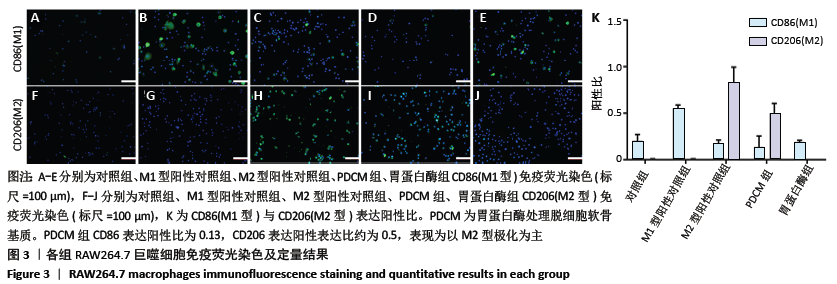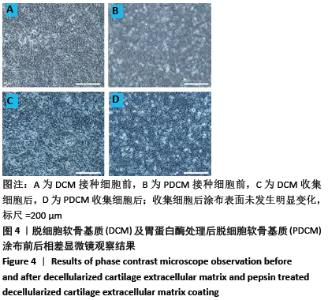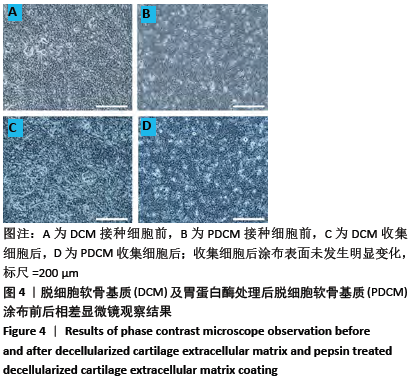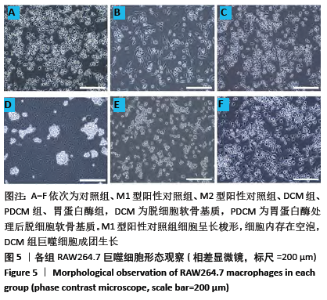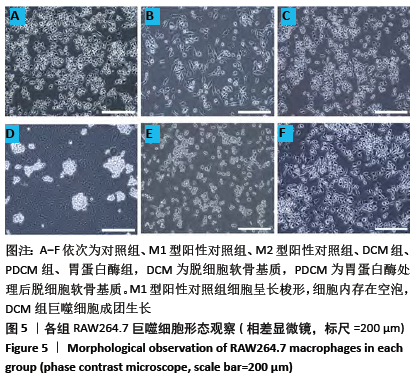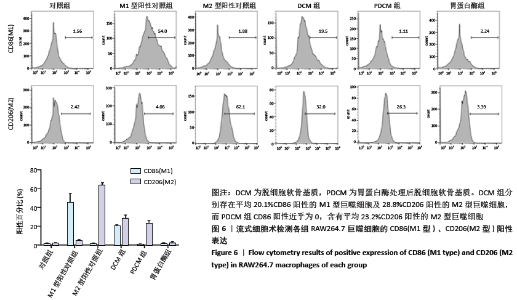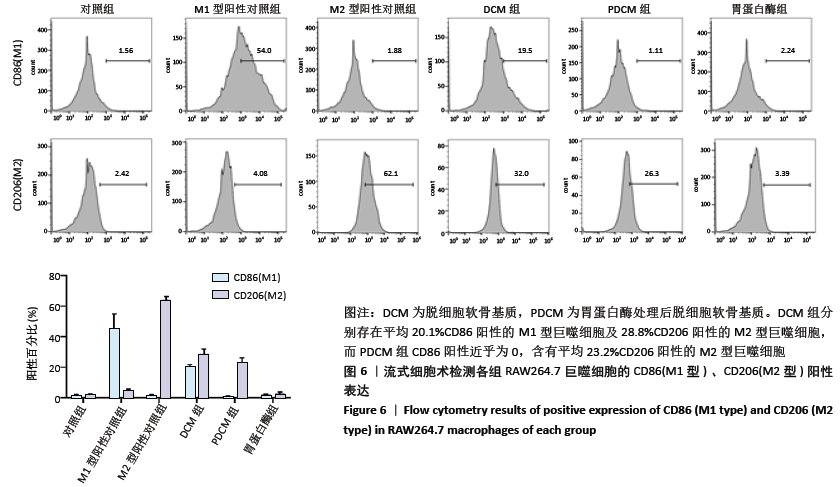[1] VADAY GG, LIDER O. Extracellular matrix moieties, cytokines, and enzymes: dynamic effects on immune cell behavior and inflammation. J Leukoc Biol. 2000;67(2):149-159.
[2] SINGH A, PEPPAS NA. Hydrogels and scaffolds for immunomodulation. Adv Mater. 2014;26(38):6530-6541.
[3] DZIKI JL, HULEIHEL L, SCARRITT ME, et al. Extracellular Matrix Bioscaffolds as Immunomodulatory Biomaterials. Tissue Eng Part A. 2017;23(19-20):1152-1159.
[4] TARABALLI F, SUSHNITHA M, TSAO C, et al. Biomimetic Tissue Engineering: Tuning the Immune and Inflammatory Response to Implantable Biomaterials. Adv Healthc Mater. 2018;7(17):e1800490.
[5] HUSSEY GS, CRAMER MC, BADYLAK SF. Extracellular Matrix Bioscaffolds for Building Gastrointestinal Tissue. Cell Mol Gastroenterol Hepatol. 2017;5(1):1-13.
[6] CHEN M, FENG Z, GUO W, et al. PCL-MECM-Based Hydrogel Hybrid Scaffolds and Meniscal Fibrochondrocytes Promote Whole Meniscus Regeneration in a Rabbit Meniscectomy Model. ACS Appl Mater Interfaces. 2019;11(44):41626-41639.
[7] WANG Y, PAPAGERAKIS S, FAULK D, et al. Extracellular Matrix Membrane Induces Cementoblastic/Osteogenic Properties of Human Periodontal Ligament Stem Cells. Front Physiol. 2018;9:942.
[8] SWINEHART IT, BADYLAK SF. Extracellular matrix bioscaffolds in tissue remodeling and morphogenesis. Dev Dyn. 2016;245(3):351-360.
[9] WYNN TA, VANNELLA KM. Macrophages in Tissue Repair, Regeneration, and Fibrosis. Immunity. 2016;44(3):450-462.
[10] WYNN TA, RAMALINGAM TR. Mechanisms of fibrosis: therapeutic translation for fibrotic disease. Nat Med. 2012;18(7):1028-1040.
[11] MOSSER DM, EDWARDS JP. Exploring the full spectrum of macrophage activation. Nat Rev Immunol. 2008;8(12):958-969.
[12] MURRAY PJ, ALLEN JE, BISWAS SK, et al. Macrophage activation and polarization: nomenclature and experimental guidelines. Immunity. 2014;41(1):14-20.
[13] JETTEN N, VERBRUGGEN S, GIJBELS MJ, et al. Anti-inflammatory M2, but not pro-inflammatory M1 macrophages promote angiogenesis in vivo. Angiogenesis. 2014;17(1):109-118.
[14] VALENTIN JE, STEWART-AKERS AM, GILBERT TW, et al. Macrophage participation in the degradation and remodeling of extracellular matrix scaffolds. Tissue Eng Part A. 2009;15(7):1687-1694.
[15] MA N, WANG HX, XU X, et al. Autologous-cell-derived, tissue-engineered cartilage for repairing articular cartilage lesions in the knee: study protocol for a randomized controlled trial. Trials. 2017;18:13.
[16] ZHENG XF, YANG F, WANG S, et al. Fabrication and cell affinity of biomimetic structured PLGA/articular cartilage ECM composite scaffold. J Mater Sci Mater Med. 2011;22(3):693-704.
[17] ZHENG XF, LU SB, ZHANG WG, et al. Mesenchymal stem cells on a decellularized cartilage matrix for cartilage tissue engineering. Biotecheno Bioproc E. 2011;16(3):593-602.
[18] 彭礼庆,罗旭江,张彬,等.人关节软骨细胞外基质来源组织工程支架的制备和评估[J].中国组织工程研究,2019,23(34):5436-5441.
[19] CRAPO PM, GILBERT TW, BADYLAK SF. An overview of tissue and whole organ decellularization processes. Biomaterials. 2011;32(12):3233-3243.
[20] DAI M, LIU X, WANG N, et al. Squid type II collagen as a novel biomaterial: Isolation, characterization, immunogenicity and relieving effect on degenerative osteoarthritis via inhibiting STAT1 signaling in pro-inflammatory macrophages. Mater Sci Eng C Mater Biol Appl. 2018;89:283-294.
[21] DAI M, SUI B, XUE Y, et al. Cartilage repair in degenerative osteoarthritis mediated by squid type II collagen via immunomodulating activation of M2 macrophages, inhibiting apoptosis and hypertrophy of chondrocytes. Biomaterials. 2018;180:91-103.
[22] RAYAHIN JE, BUHRMAN JS, ZHANG Y, et al. High and low molecular weight hyaluronic acid differentially influence macrophage activation. ACS Biomater Sci Eng. 2015;1(7):481-493.
[23] SICARI B, DZIKI J, SIU B, et al. The promotion of a constructive macrophage phenotype by solubilized extracellular matrix. Biomaterials. 2014;35(30):8605-8612.
[24] Mantovani A, Sica A, Locati M. Macrophage polarization comes of age. Immunity. 2005;23(4):344-346.
[25] MURRAY PJ. Macrophage Polarization. Annu Rev Physiol. 2017;79: 541-566.
[26] ROWLEY AT, NAGALLA RR, WANG SW, et al. Extracellular Matrix-Based Strategies for Immunomodulatory Biomaterials Engineering. Adv Healthc Mater. 2019;8(8):1801578.
[27] CHAKRABORTY J, ROY S, GHOSH S. Regulation of decellularized matrix mediated immune response. Biomater Sci. 2020;8(5):1194-1215.
[28] LONDONO R, BADYLAK SF. Biologic scaffolds for regenerative medicine: mechanisms of in vivo remodeling. Ann Biomed Eng. 2015;43(3): 577-592.
[29] MCWHORTER FY, WANG T, NGUYEN P, et al. Modulation of macrophage phenotype by cell shape. Proc Natl Acad Sci U S A. 2013;110(43): 17253-17528.
[30] SALDIN LT, CRAMER MC, VELANKAR SS, et al. Extracellular matrix hydrogels from decellularized tissues: Structure and function. Acta Biomater. 2017;49:1-15.
[31] WOLF MT, DEARTH CL, RANALLO CA, et al. Macrophage polarization in response to ECM coated polypropylene mesh. Biomaterials. 2014; 35(25):6838-6849.
[32] BROWN BN, LONDONO R, TOTTEY S, et al. Macrophage phenotype as a predictor of constructive remodeling following the implantation of biologically derived surgical mesh materials. Acta Biomater. 2012; 8(3):978-987.
[33] HULEIHEL L, DZIKI JL, BARTOLACCI JG, et al. Macrophage phenotype in response to ECM bioscaffolds. Semin Immunol. 2017;29:2-13.
[34] DZIKI JL, WANG DS, PINEDA C, et al. Solubilized extracellular matrix bioscaffolds derived from diverse source tissues differentially influence macrophage phenotype. J Biomed Mater Res A. 2017;105(1):138-147.
|


